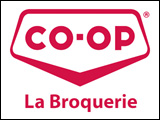Testing has shown that levels of Escherichia coli were within recreational water quality guidelines at most beaches monitored this week by Manitoba Water Stewardship.
Escherichia coli (E. coli) counts were above the guideline at the Red Cross Dock near Victoria Beach on Aug. 16, however, counts fell below the guideline by Aug. 18. E. coli counts were also above the guideline at the Bird’s Hill Park mid beach on Aug. 18. The beach is being re-sampled and results will be posted online.
On Lake Winnipeg, weather and lake level information appear to be good predictors of E. coli levels. Bacteria counts tend to increase when strong north winds cause water levels to temporarily increase and large waves wash bacteria out of beach sand. When calmer weather returns, E. coli bacteria levels typically fall quickly to below guideline levels.
The number of blue-green algae cells was above the recreational water quality guideline at Pelican Lake (north and south beaches) on Aug. 16 and at Rock Lake (Friesen’s Beach) Aug. 17 but the concentration of an algae toxin, microcystin-LR, was below the recreational water quality guideline at all three beaches. Bathers are reminded to avoid swimming in dense algae blooms and to watch for advisory signs posted at beaches. Information on advisory signs is available online.
Algae blooms are difficult to predict and may form and then disperse quickly or last for several days or weeks. Warm and calm weather coupled with relatively high nutrient loads provide ideal conditions for blue-green algae to develop.
Bathers are reminded to avoid swimming in water where severe algae blooms are visible and to prevent pets from drinking water along the shoreline.
Results for all beaches across Manitoba are posted as they become available on Manitoba Water Stewardship’s website.
Visit the Manitoba beaches website for information on swimmer and water safety and what can be done to help protect beaches by following the water-smart precautions listed on the website.



